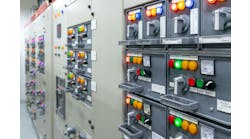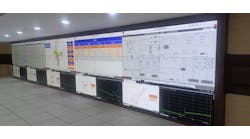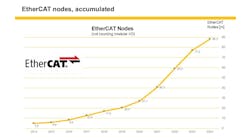"PCS 7 lets us immediately check 10 I/O points, even if they're over two chart domains. That means a lot less stress for everyone," says Curtis Flowers, operations technology director at San Joaquin Refining
It's tough to go it alone in any context, but it's especially ill-advised and often impossible for controls in most process applications such as oil refining. No matter how competent and independent any end user happens to be, process controls must maintain some level of support from their suppliers—and when that support is unavailable, usually due to obsolescence, it's time to upgrade.Fortunately, most suppliers support their control systems, components and software beyond the usual obsolescence stage, and typically go out of their way to provide migration paths for their long-time customers. For example, San Joaquin Refining (SJR) Co. operates a small refinery in Bakersfield, Calif., where its 150 employees refine 20,000-30,000 barrels per day (BPD) of crude oil, and manufacture specialty and niche products, such as transformer oils, paving asphalts and ink oils. It had used APACS+ controls for many years, but needed an upgrade when Siemens could no longer guarantee support, fewer and fewer staff knew how to use it, and support was only available via third-party vendors, according to Curtis Flowers, SJR's operations technology director.
Must-do migration
"We had to upgrade due to lack of product availability, which meant that equipment failures couldn't be supported, replacement availability elsewhere was unknown, and their prices could fluctuate," said Flowers. "This was an unsustainable situation that caused too much stress.
"The potential consequences are real, including unplanned downtime of an extended duration and possible loss of production. In our case, we usually only shut down once every seven years to replace the catalyst in our hydrotreating unit. However, a 30-second power blip from our utility, PG&E, could trip that hydrogen unit, which would take us three days to recover from. So for us, unplanned downtime is huge."
Flowers and Willem Kastelein, principal system engineer for process automation at Siemens, presented "Migrating into the future—away from APACS+ to PCS 7 V9 with ET200SP HA" on the opening day of Siemens Automation Summit 2018 on June 26 in Marco Island, Fla. He added that he started as a business intelligence programmer at SJR, moved to the DCS and automation side in 2008, and has been involved in both recent I/O migrations, including APACS controllers to DPIO, and DPIO to Siemens S7-410 controllers.
"Our upgrade was scheduled in two five-day stages, one on either side of the refinery," said Flowers. "The first was converting from APACS to Siemens PCS 7-417 controllers and DPIO I/O devices, and full conversion to I/O programming architecture. The second was converting from APACS I/O to Siemens ET200SP HA I/O system with S7-AS410H controllers.
Wiring wellness
Flowers reported that he and his colleagues at San Joaquin Refining appreciate ET200SP HA because it's Profinet communication protocol allows Ethernet networking and can use fiber-optic cabling, too. "This is a big advantage because we can traverse the whole refinery with it, and get I/O where they couldn't go before," explained Flowers. "It's also an improvement compared to Profibus, which is bulkier and required components to be daisy-chained together."
Likewise, SJR's current I/O were already close to capacity, so being able to use Ethernet in its cabinets and remote I/O saved some crucial space and added some much-needed flexibility. "We were able to keep our APACS MTA cable, and still hook it up to ET200SP HA," adds Flowers. "It was almost plug-and-play."
Kastelein reported, while SJR completed detailed designs for its upgrade, it was limited to a few types of I/O cards it could use because ET200SP HA is so new. "The refinery originally had APACS' 32 channels, which are built so users can install new, pre-made panels," said Kastelein. "As a result, the old system and all its analog and digital inputs and outputs were evaluated, so the panel shop would know what to do."
One concern when performing a major system migration is having intimate knowledge of both the old and new systems. “Knowing where and how APACS SAM I/O cards reads current values compared to the ET200SP HA I/O, we were able reduce troubleshooting time for detecting and fixing ground loops and shielding issues, said Kasteline.”
On the software side, Kastelein added the upgrade at SJR included new PCs and CP cards, operating system migration, domain servers, central time synchronization, Simatic Logon software, and custom APL symbols so that no new functionalities were missed. "All of these components were tested and we did 100% wire testing during the factory acceptance test (FAT) at the panel shop because risk wasn't something we could have during the startup of the plant," he explained. "Because of the upgrade project's short time line, we did have to do some testing while other panels were being built, but we still managed to do 100% of the I/O."
Upgrade advantages
Beyond providing San Joaquin Refining with new, fully supported controls and I/O, Flowers added that its migration project has also given it improved better programming, better organized data management tools, and more effective engineering thanks to charts from Siemens that are easier to work with. "For example, PCS 7 lets us immediately check 10 I/O points, even if they're over two chart domains," added Flowers. "That means a lot less stress for everyone."







